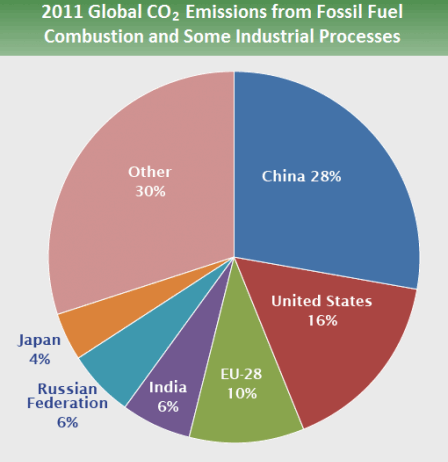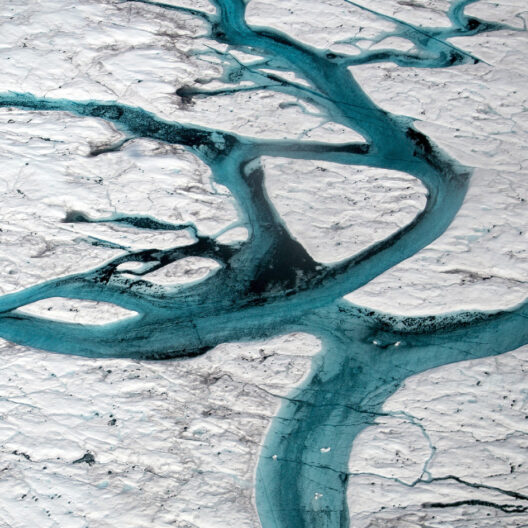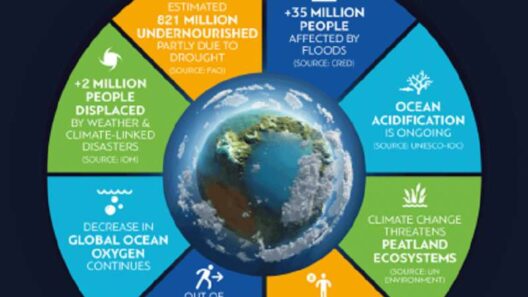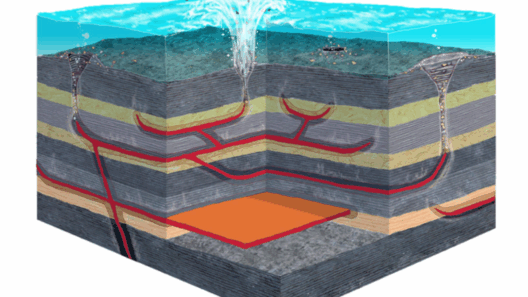Carbon dioxide (CO₂) is often discussed as the quintessential greenhouse gas, yet its role in global warming is often misunderstood. This seemingly innocuous molecule, comprised of one carbon atom and two oxygen atoms, is a natural constituent of the Earth’s atmosphere. However, the exponential increase of CO₂ concentrations since the Industrial Revolution has ushered in an unprecedented climatic upheaval. Understanding how carbon dioxide contributes to global warming requires more than a cursory glance; it necessitates an exploration into its sources, mechanisms, and impacts on both the environment and human society.
To comprehend the full scope of CO₂’s influence on global warming, one must first appreciate the carbon cycle. This intricate biogeochemical cycle governs the movement of carbon among various reservoirs, including the atmosphere, oceans, soil, and living organisms. Carbon naturally cycles between these reservoirs through processes such as respiration, photosynthesis, and decomposition. However, human activities, especially fossil fuel combustion, deforestation, and industrial processes, have significantly altered this balance. Each year, billions of tons of CO₂ are released into the atmosphere, overwhelming natural processes that would normally sequester this carbon.
The greenhouse effect, a fundamental principle driving climate change, is the mechanism through which CO₂ exacerbates global warming. Solar radiation passes through the atmosphere, reaching the Earth’s surface and warming it. Subsequently, the Earth radiates some of this energy back into space as infrared radiation. Greenhouse gases, including CO₂, trap a portion of this outgoing radiation, effectively insulating the planet. This process is essential for maintaining the Earth’s temperature; without it, our planet would be too cold to sustain life as we know it. However, anthropogenic CO₂ emissions have intensified this effect, augmenting the natural greenhouse effect and resulting in a thermal runaway scenario.
The ramifications of increased CO₂ levels are profound. A primary consequence is the alteration of global temperature patterns. The Intergovernmental Panel on Climate Change (IPCC) indicates a clear correlation between elevated CO₂ concentrations and rising global temperatures. The increase in average temperatures has cascading effects on weather patterns, leading to more frequent and severe heatwaves, altered precipitation patterns, and intensified storms. As the climate warms, we also witness the alarming phenomenon of glacial melt, which contributes to rising sea levels. Coastal communities are severely threatened, with estimates suggesting millions could be displaced by the end of the century.
Moreover, the amplification of CO₂ levels induces changes in ocean chemistry. The oceans absorb a substantial portion of the CO₂ emitted into the atmosphere, resulting in ocean acidification. This alteration in pH levels can have detrimental effects on marine ecosystems, particularly on calcifying organisms such as coral reefs and shelled mollusks. The disruption of these ecosystems poses a threat not only to marine biodiversity but also to human economies reliant on fishing and tourism.
The implications of CO₂ emissions extend beyond environmental facets to encompass social and economic dimensions. Developing nations, often the least responsible for greenhouse gas emissions, are disproportionately affected by climate change due to their limited adaptive capacity. Food security is jeopardized as changing climates impact agricultural yields, threatening livelihoods and exacerbating poverty. Furthermore, health risks are escalating as heat-related illnesses and vector-borne diseases become more prevalent in warmer climates.
In addressing CO₂ emissions, society stands at a critical juncture. Mitigation strategies hinge on a multifaceted approach that includes transitioning to renewable energy sources, enhancing energy efficiency, and implementing carbon capture and storage technologies. For instance, the widespread adoption of solar and wind energy can drastically reduce reliance on fossil fuels. Urban planning that prioritizes public transportation, walkable communities, and green spaces can additionally diminish carbon footprints.
A promising avenue is the reforestation of degraded landscapes and the restoration of natural habitats, which serve as carbon sinks. Forests absorb CO₂ during photosynthesis, effectively sequestering carbon and mitigating atmospheric concentrations. Community engagement in local conservation projects not only restores ecosystems but also fosters a collective responsibility toward environmental stewardship.
Moreover, societal awareness and behavioral shifts play an indispensable role in combating climate change. Educating individuals about the carbon footprint of their choices—ranging from diet to transportation—can catalyze significant change. Simple actions, such as reducing meat consumption, utilizing public transportation, or supporting sustainable practices, compound to create a substantial impact when adopted on a large scale.
As individuals, communities, and nations grapple with the challenge of global warming, the discourse surrounding CO₂ must evolve beyond mere alarmism. It presents an opportunity for innovation, resilience, and collaboration. Embracing the urgency of this crisis can foster advancements in technology, transformative policy changes, and a renewed commitment to the planet.
In conclusion, CO₂ will undoubtedly remain a central player in the narrative of climate change. By understanding its role in global warming and the far-reaching implications of its emissions, society can cultivate a more informed perspective. This newfound awareness—as daunting as it may be—can also serve as a catalyst for action. Through collective efforts and steadfast determination, a sustainable future can be realized where the balance of the carbon cycle is restored, and the planet can thrive for generations to come.








